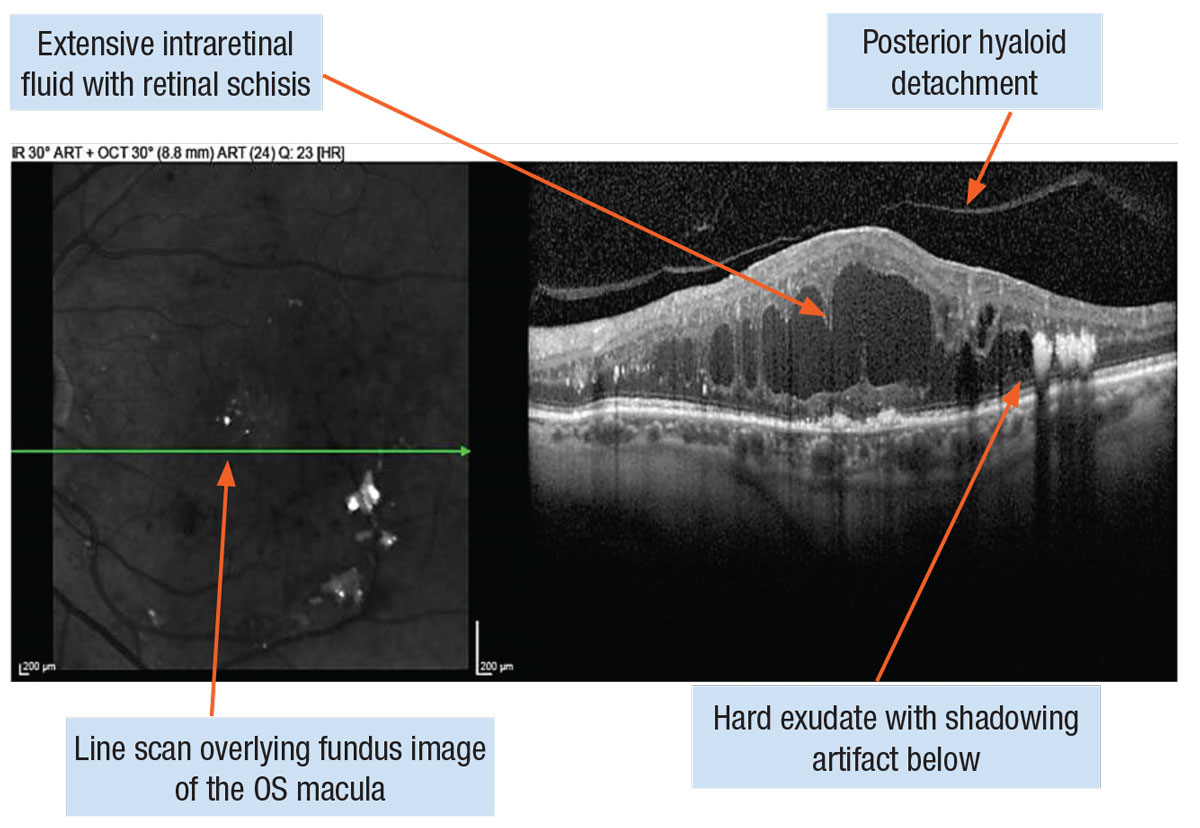 |
|
Vitrectomy may have a protective effect on DME, study findings suggest. Photo: Jarett Mazzarella, OD. Click image to enlarge. |
In addition to anti-VEGF injections, vitrectomy is another potential option for treating diabetic macular edema (DME), particularly in cases with coexisting epiretinal membrane or traction.
Researchers recently explored retinal changes on SS-OCT after vitrectomy in DME patients, identifying potential predictors for good visual outcomes.
The retrospective interventional study included 35 eyes (mean age: 62) that were followed for one year after vitrectomy with inner limiting membrane peeling for DME. Using SS-OCT, the researchers found that central retinal thickness and superficial foveal avascular zone significantly decreased after surgery from 401µm to 338µm and 401µm to 293µm, respectively, while baseline visual acuity improved from 20/160 to 20/80.
After surgery, the superficial vessel density rate decreased from 42.3% to 41.6% at the end of follow-up; the deep vessel density rate remained stable through observation after one-week post-op, around 28.9%.
The researchers noted that the most important predictive factors of final visual acuity were preoperative visual acuity and central retinal thickness. Deep foveal avascular zone and deep vessel density at the time of edema resolution correlated with final visual acuity.
While macular edema recurrence has been reported to be about 15%, the researchers didn’t observe any recurrences during the 12-month observation period; however, at later time points, they reported a recurrence rate around 28%. “Recurrences were more often observed in patients with a lower vessel density, when the macular edema had resolved,” they wrote in their paper.
“Superficial foveal avascular zone decreases after vitrectomy, which might indicate that vitrectomy has a protective effect on DME, similar to anti-VEGF injections,” the researchers concluded. “Better initial visual acuity, lower central retinal thickness and lower deep foveal avascular zone are prognostic factors for a good final visual outcome after vitrectomy with subretinal injection of balanced salt solution [which may decrease osmotic pressure and viscosity of subretinal fluid to help wash out cytokines]. Decreased deep vessel density at month six was another good prognostic factor for the final visual outcome.”
Nawrocka ZA, Nawrocki J. Vitrectomy in diabetic macular edema—a swept-source optical coherence tomography (OCT) angiography study. Ophthalmol Sci. August 8, 2022. [Epub ahead of print]. |

